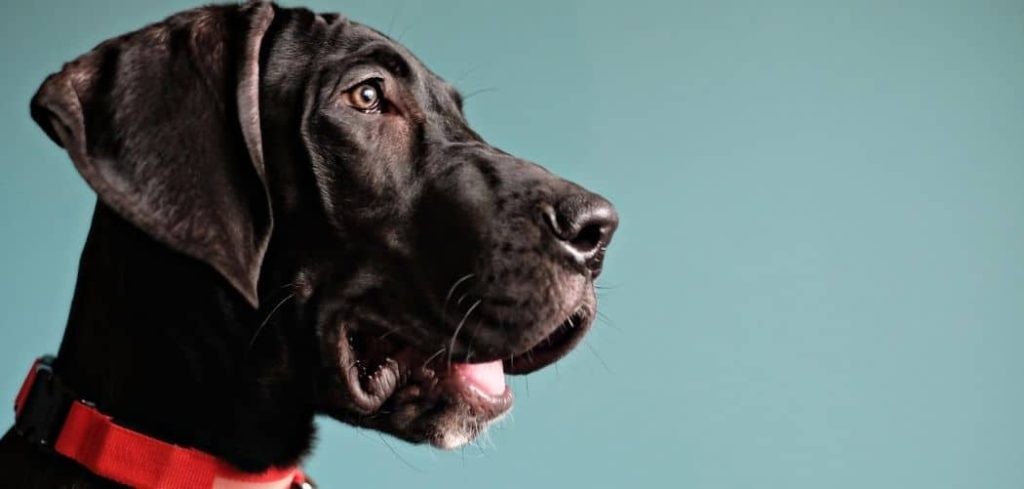It’s alarming to see your dog panting heavily and drooling after a walk—especially when it seems out of the ordinary.
While some panting and a bit of drool may be expected, excessive symptoms can point to more serious issues.
We outline the most common reasons why dogs pant and drool after a walk, what you can do at home, and when to seek veterinary help.
Table of Contents
Dog Panting and Drooling After Walk — Why It Happens
Excessive panting and drooling in dogs after a walk can signal anything from overexertion to dangerous conditions like heatstroke or poisoning. Some dogs may simply be out of shape, while others may be struggling with anxiety, pain, or an underlying illness. Hot weather, unfamiliar terrain, and overexcitement can make things worse.
When these symptoms appear together after exercise, it’s important to monitor how quickly your dog recovers—and whether other warning signs appear.

Common Reasons Why Dogs Pant and Drool After a Walk
Heatstroke
Heatstroke is one of the most urgent causes behind panting and drooling after a walk.
Dogs don’t sweat like humans. They release heat mainly through panting, so a long walk in hot or humid conditions can overwhelm their ability to cool down.
You might notice your dog panting heavily with thick, ropey drool, acting lethargic, or collapsing. Their gums may appear bright red or pale. Heatstroke can progress quickly and become life-threatening if not treated.
Related: Dog panting excessively (Causes and What To Do)
Overexertion
Even in moderate weather, too much exercise can lead to excessive panting and drooling.
Dogs that aren’t used to long walks—especially older dogs, brachycephalic (flat-faced) breeds, or overweight pets—can struggle to keep up.
Their body temperature may rise, and panting becomes labored as they try to cool off. Drooling can increase as they lose moisture through the mouth.
While not as dangerous as heatstroke, overexertion still requires rest and water—and should serve as a cue to scale back future walks.
Anxiety or Stress
Some dogs experience stress or fear during walks, especially in noisy or unfamiliar environments.
An anxious dog may pant and drool as a response to stimulation. You may notice them looking around nervously, walking with a tucked tail, or resisting the leash.
Dogs that have had past trauma, aren’t properly socialized, or are reactive to other animals may pant and drool even during a short walk around the block.
Pain or Injury
Dogs in pain may pant and drool as part of their stress response.
A walk could aggravate an existing joint issue like arthritis, or they may suffer a sprain, paw pad injury, or soft tissue strain during the outing.
Panting and drooling can appear alongside limping, reluctance to continue walking, or whimpering. If your dog suddenly shows these signs after a walk, injury should be considered.
Nausea or Toxin Exposure
If your dog licked or ingested something harmful during the walk—like toxic plants, antifreeze, or garbage—it can lead to drooling and panting.
Nausea and gastrointestinal upset often trigger excessive drooling. Panting may follow as the dog becomes uncomfortable or stressed.
In more serious cases, poisoning can lead to vomiting, tremors, or seizures. Immediate vet attention is essential if you suspect toxin exposure.
Brachycephalic Breeds and Breathing Strain
Dogs with flat faces—like Bulldogs, Pugs, and Shih Tzus—have narrower airways and can struggle to regulate their body temperature.
These breeds naturally pant more, but if panting becomes extreme and is paired with thick drool, it may mean your dog is overheating or struggling to breathe.
Walks during cooler times of day and in shaded areas are best for these dogs.
What to Do If Your Dog Is Panting and Drooling After Walk
Start by helping your dog cool down. Move them to a shaded or air-conditioned area and offer cool, fresh water. Avoid giving ice-cold water too quickly, as it can cause stomach upset.
If your dog is overheated, you can wet their paws and underbelly with lukewarm water to aid in cooling. Avoid using ice or very cold water.
Allow them to rest quietly. Don’t encourage more activity. Keep an eye on their breathing and note how long it takes for the panting and drooling to subside.
If the symptoms don’t improve within 15–20 minutes—or worsen—consider calling your vet.
Avoid feeding your dog immediately after a strenuous walk. Wait until they’ve fully cooled down and are calm.
When to Call or Visit Your Vet
Contact your vet if your dog shows any of the following after a walk:
Persistent panting that doesn’t improve with rest.
Excessive drooling with thick saliva or foam.
Lethargy, confusion, or unsteady walking.
Vomiting, diarrhea, or signs of nausea.
Bright red, pale, or blue gums.
Collapse or refusal to stand.
If you suspect heatstroke, poisoning, or an allergic reaction, seek emergency care immediately. These conditions can worsen rapidly.
Read more: Dog Panting and Shaking After Walk (Tiredness—or something serious?)
Key Takeaway
Panting and drooling after a walk can be normal—but when it’s excessive or doesn’t resolve quickly, it may indicate something more serious.
By observing your dog’s recovery, watching for warning signs, and adjusting future walks accordingly, you can keep your pup safe and comfortable.
When in doubt, especially in cases of heat or toxin exposure, don’t hesitate to reach out to your vet. It’s always better to play it safe when it comes to your dog’s health.
